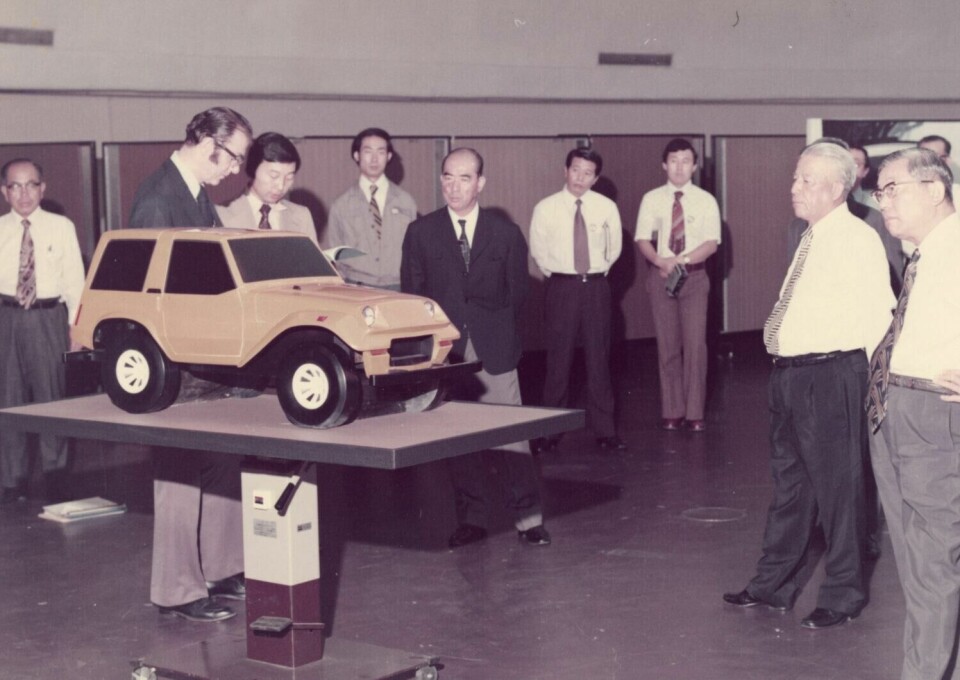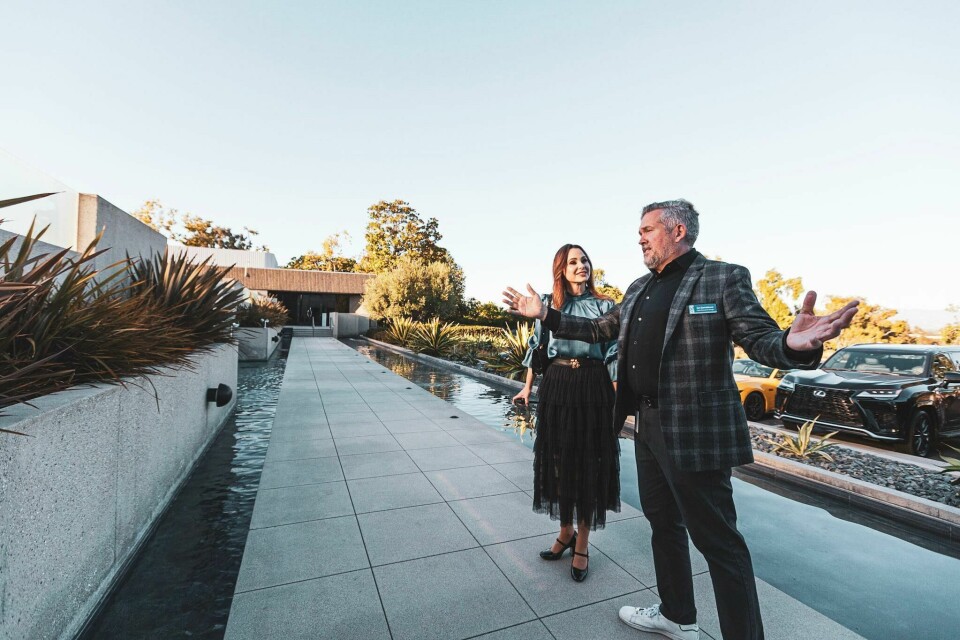
Toyota’s CALTY turns 50, reveals unseen concepts
California’s first major automotive design studio started as a secret experiment and grew over the past five decades to imagine and inspire some of the company’s most iconic vehicles — and many that never got made. CDN’s Laura Burstein was invited to the celebration in Newport Beach and got the lowdown on some of the historic highlights
On a warm autumn night, Calty Design Research opened its doors to a select group of media to celebrate its 50th anniversary and showcase many of the highlights of its five-decade tenure. During our visit, we got a private tour from Ian Cartabiano, VP of advanced design, and chatted with head of Toyota and Lexus global design Simon Humphries, as well as Calty president (and longtime Calty designer) Kevin Hunter.
“It never ceases to amaze me just how many designs have come from Calty and what a source of inspiration it has been,” Humphries said. “It represents everything that’s good about design.”

Established in 1973 under the direction of Shoichiro Toyoda, son of the company’s founder, and Eiji Toyoda, CALTY, short for California Toyota, was the Golden State’s first major automotive design studio. (Although design legend Chuck Pelly opened Designworks in Southern California the year before, the independent design firm was not fully acquired by BMW until almost two decades later.)
Upon its opening in El Segundo, an industrial city in Los Angeles’ South Bay that was once a hotbed of the American aerospace industry, Calty was kept under the radar to explore the American market’s unique preferences and desires, and provide fresh inspiration to designers in Japan. “We started in a small rented building in humble and secretive beginnings, reflecting the experimental nature of a unique cross-cultural venture between Japanese and Americans coming together to design automobiles,” Calty president Kevin Hunter said. “Calty took advantage of all that California had to offer by crafting our studio ethos around creativity and innovation.”

Those who worked there weren’t allowed to talk about what they did or even have business cards. “It was so secret, the neighbors thought we were making and selling T-shirts. It was the perfect 1970s front for disguising a covert operation,” Hunter mused.
Five years later, the studio moved to its current home in the Orange County coastal community of Newport Beach, and turned out its first major production vehicle, the 1978 Toyota Celica. Many more production models followed, including the Camry, introduced in 1982, the 1991 Previa minivan, the iconic FJ Cruiser, and most recently, the 2024 Land Cruiser and 2024 Tacoma. In 2004, Calty opened a second location in Ann Arbor, Michigan.
While production models showcased Calty’s ability to resonate with consumers, the studio’s concept cars have consistently pushed the boundaries of innovation and design.
Two concepts to emerge from Calty’s creative minds in the 1980s were the MX-1, a mid-engine sports car with scissor doors, and the MX-2, another mid-engine sports car concept, built from fiberglass reinforced plastic (CRP) and featuring a swing-arm steering wheel that enabled the car to be left-hand- or right-hand-drive. In later years, Calty designers created the Lexus LF-LC (which later became the LC500), and the 2014 FT-1 concept car that later became the current-generation Supra.
Notably, Calty also pioneered balloon surfacing, an experimental technique where designers wrapped balloons filled with wet plaster around their arms to created rounded, organic shapes. They also experimented with ideas for personal mobility beyond the traditional car — including a travel trailer concept in 1975 and much later, the NYC concept, a small urban vehicle with a near-upright standing driving position.
Unveiled at the 50th anniversary event was a new virtual concept, the Baby Lunar Cruiser, which takes design cues from the original FJ40 Land Cruiser and is inspired by an actual vehicle being developed by Toyota and the Japanese Aerospace Exploration Agency.
Under Humphries’ leadership, Calty and Toyota’s other design studios do not compete against one another for projects, but are rather specifically commissioned. “Each studio has its own strengths, not only in regard to the team but also in terms of the facilities and resources,” he says.
Looking toward the future, Humphries says designers have a unique responsibility to answer the challenges society faces today. “As we continue our journey from the automotive era into the mobility era, Calty will be at the forefront,” he says. “I’ve never witnessed anything other than optimism, open-mindedness and passion from the people who work here, and I have no doubt they will continue to bring joy and creative energy to Toyota, Lexus and all of our customers.”
























